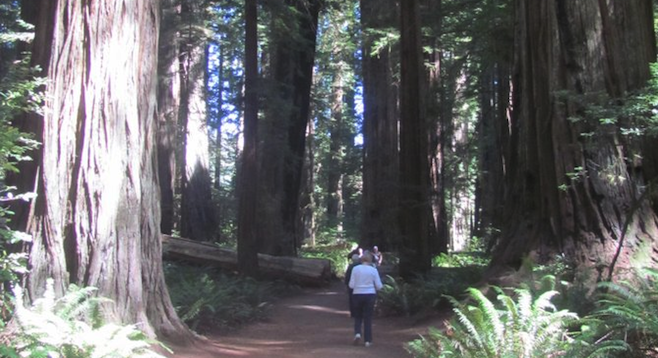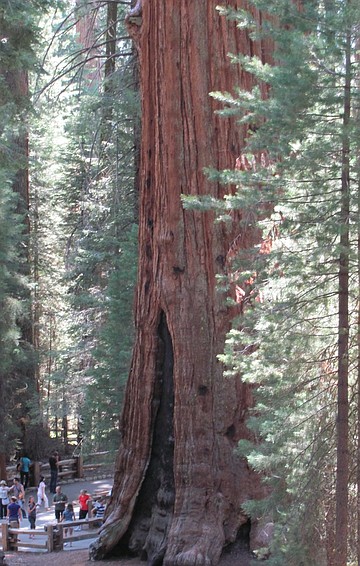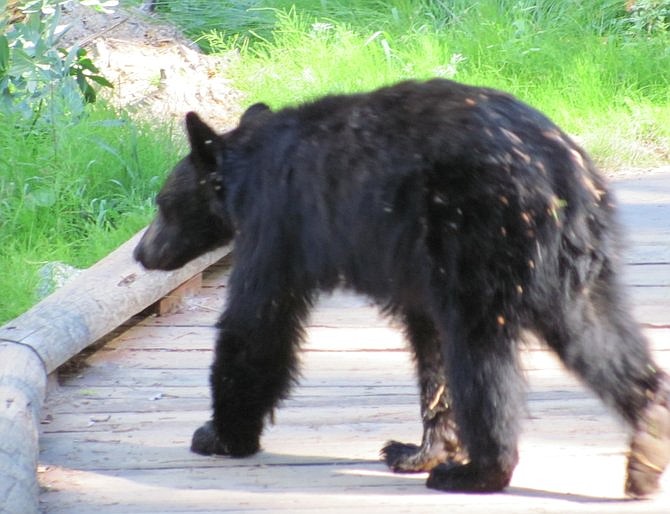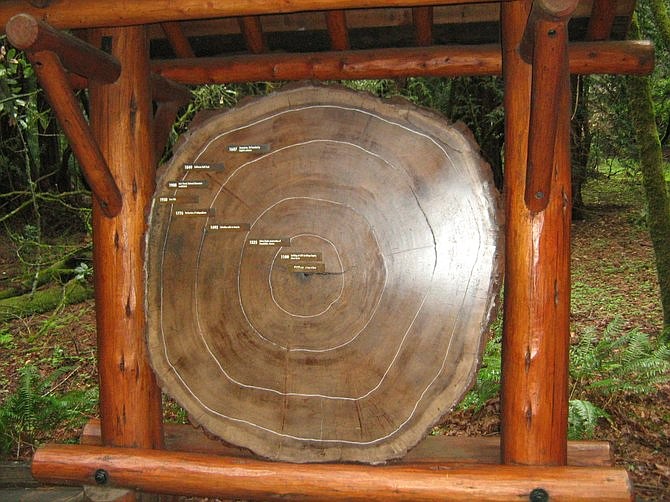 Facebook
Facebook
 X
X
 Instagram
Instagram
 TikTok
TikTok
 Youtube
Youtube


With its varied climates, landscapes and ecosystems, California is a one-of-a-kind state. When European settlers first arrived here, one of the signs of this uniqueness they discovered were the mammoth trees of California, the sequoia and the redwood.
When word of these large trees initially spread East, they were thought to be a hoax perpetuated by the Westerners. By the time the rest of the country came to truly appreciate this eco-treasure, large swaths of forest had already been cut down.
Fortunately for us, pockets of giant trees were preserved. Although there are quite a few spots to see redwoods and sequoias in California, three areas stand head and tail above the rest: Sequoia National Park, Muir Woods National Monument and Redwoods National Park.
Sequoia National Park
Sequoia trees are the largest living trees in the world by mass, being in general wider in circumference than, but not as tall as redwoods. Sequoias are also a little rarer, with a range limited to the medium elevations of the western Sierras.
There's no better place to see sequoias than Sequoia National Park, 35 miles east of Visalia. The Congress Trail leads you up to the largest tree in the world, the General Sherman, with a circumference of 102 feet at the base. Three of the five largest trees in the world are on this trail.

The nearby Big Trees Trail leads you through a redwood grove that surrounds Round Meadow, the single best place to see black bear (left), common in the park.
Muir Woods National Monument
Being just a few minutes north of San Francisco, this redwood grove is one of the most accessible. That accessibility comes at a price however: crowds. The park has helped control that by limiting parking and providing a shuttle bus from the Sausalito area. Still, to experience redwoods in silence, it’s best to get here early in the morning.

Muir Woods preserves a relatively small grove (compared to its northern equivalents) of old-growth redwoods. There are six miles of hiking trails through the park.
Redwood National Park
Much more remote than Muir Woods but with larger, more plentiful redwoods is Redwood National Park in the northwest corner of California. It’s not a single park, but a series of state parks and
national forest land combined together under the moniker of a national park.
It’s here you will find some of the tallest trees in the world. The park is centered around Crescent City, with the most impressive redwoods in Jedediah Smith State Park east of town and Prairie Creek Redwoods State Park about 15 miles south. A walk among a grove of these trees is guaranteed to make you feel small.
If you tire of big trees, the coastline along this section is almost, if not on par with, the beauty of Big Sur. Abundant wildlife can be found both in sea and on land, ranging from whales to Roosevelt elk.
Bottom line
California is a state of much diversity and many unique sights, but none more so than the big trees of California. From the sequoias of the Sierras to the northern coastal redwoods – sorry Texas, but California is the state where thing just grow a little bigger.



With its varied climates, landscapes and ecosystems, California is a one-of-a-kind state. When European settlers first arrived here, one of the signs of this uniqueness they discovered were the mammoth trees of California, the sequoia and the redwood.
When word of these large trees initially spread East, they were thought to be a hoax perpetuated by the Westerners. By the time the rest of the country came to truly appreciate this eco-treasure, large swaths of forest had already been cut down.
Fortunately for us, pockets of giant trees were preserved. Although there are quite a few spots to see redwoods and sequoias in California, three areas stand head and tail above the rest: Sequoia National Park, Muir Woods National Monument and Redwoods National Park.
Sequoia National Park
Sequoia trees are the largest living trees in the world by mass, being in general wider in circumference than, but not as tall as redwoods. Sequoias are also a little rarer, with a range limited to the medium elevations of the western Sierras.
There's no better place to see sequoias than Sequoia National Park, 35 miles east of Visalia. The Congress Trail leads you up to the largest tree in the world, the General Sherman, with a circumference of 102 feet at the base. Three of the five largest trees in the world are on this trail.

The nearby Big Trees Trail leads you through a redwood grove that surrounds Round Meadow, the single best place to see black bear (left), common in the park.
Muir Woods National Monument
Being just a few minutes north of San Francisco, this redwood grove is one of the most accessible. That accessibility comes at a price however: crowds. The park has helped control that by limiting parking and providing a shuttle bus from the Sausalito area. Still, to experience redwoods in silence, it’s best to get here early in the morning.

Muir Woods preserves a relatively small grove (compared to its northern equivalents) of old-growth redwoods. There are six miles of hiking trails through the park.
Redwood National Park
Much more remote than Muir Woods but with larger, more plentiful redwoods is Redwood National Park in the northwest corner of California. It’s not a single park, but a series of state parks and
national forest land combined together under the moniker of a national park.
It’s here you will find some of the tallest trees in the world. The park is centered around Crescent City, with the most impressive redwoods in Jedediah Smith State Park east of town and Prairie Creek Redwoods State Park about 15 miles south. A walk among a grove of these trees is guaranteed to make you feel small.
If you tire of big trees, the coastline along this section is almost, if not on par with, the beauty of Big Sur. Abundant wildlife can be found both in sea and on land, ranging from whales to Roosevelt elk.
Bottom line
California is a state of much diversity and many unique sights, but none more so than the big trees of California. From the sequoias of the Sierras to the northern coastal redwoods – sorry Texas, but California is the state where thing just grow a little bigger.
Comments